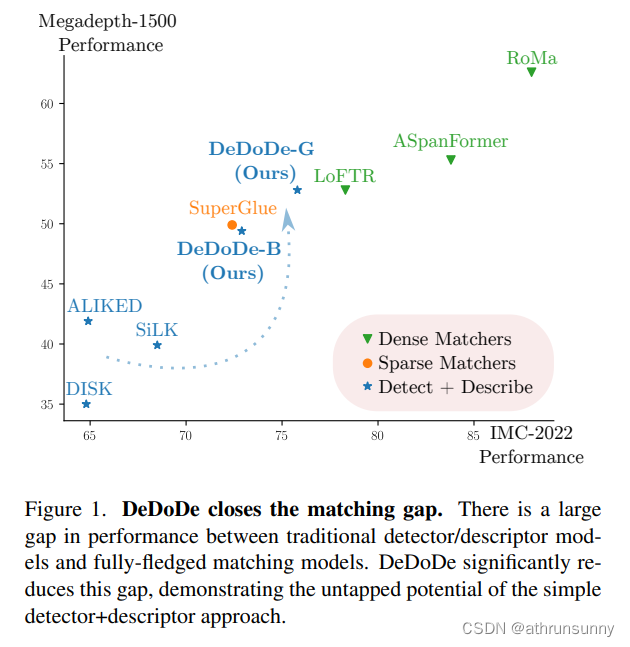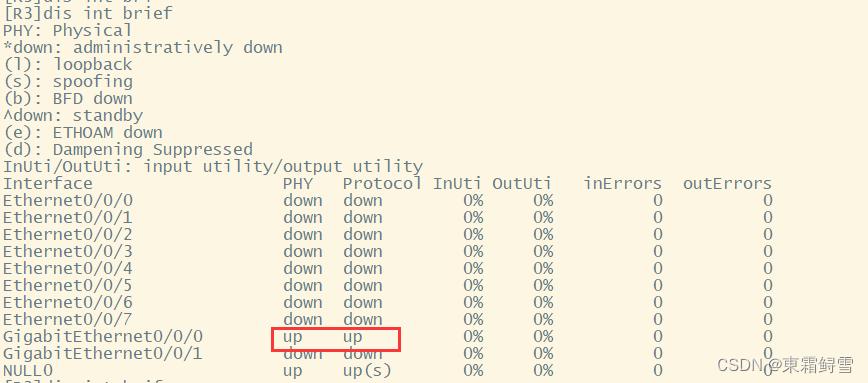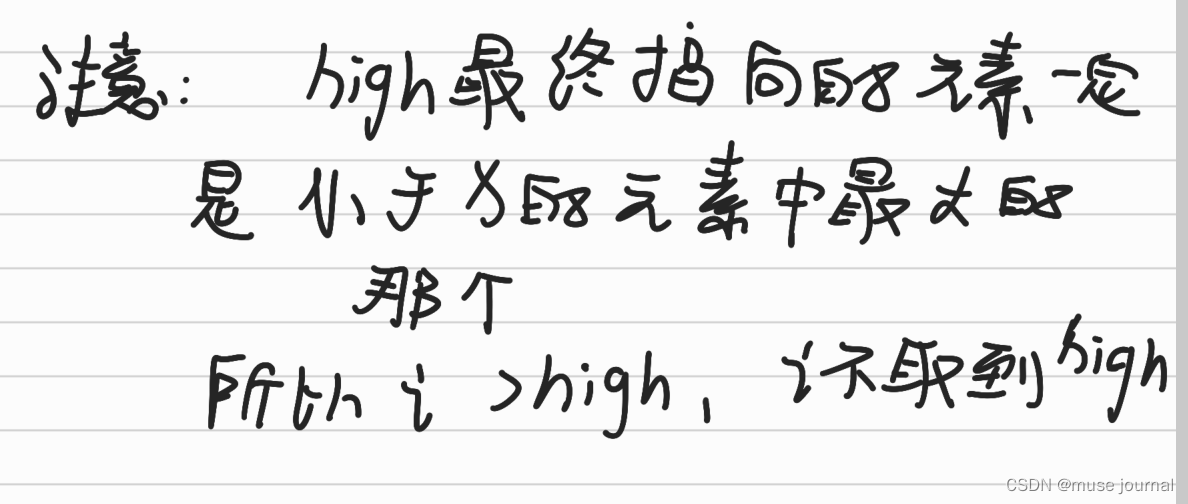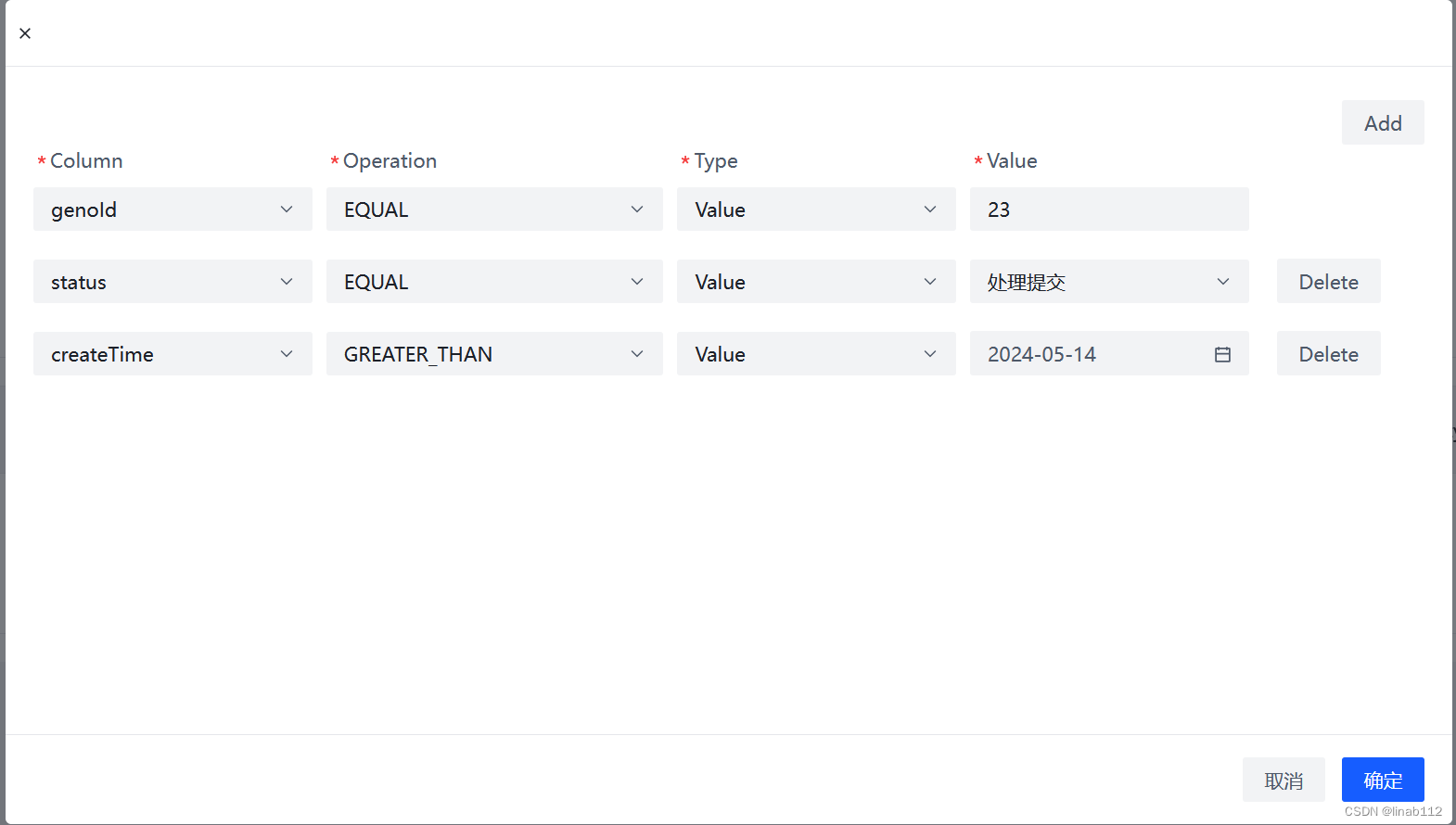一、本文介绍
本文给大家带来的改进机制是MobileNetV4,其发布时间是2024.5月。MobileNetV4是一种高度优化的神经网络架构,专为移动设备设计。它最新的改动总结主要有两点,采用了通用反向瓶颈(UIB)和针对移动加速器优化的Mobile MQA注意力模块(一种全新的注意力机制)。这些创新有助于在不牺牲准确性的情况下,显著提高推理速度和计算效率。MobileNetV4作为一种移动端的网络,其实它的论文中主要是配合蒸馏技术进行改进,大家可以搭配本专栏的蒸馏进行二次创新涨点。
欢迎大家订阅我的专栏一起学习YOLO!

目录
一、本文介绍
二、原理介绍
三、核心代码
四、手把手教你添加MobileNetv4
4.1 修改一
4.2 修改二
4.3 修改三
4.4 修改四
4.5 修改五
4.6 修改六
4.7 修改七
4.8 修改八
注意!!! 额外的修改!
打印计算量问题解决方案
注意事项!!!
五、MobileNetv4 的yaml文件
5.1 MobileNetv4 的yaml文件
5.2 训练文件的代码
六、成功运行记录
七、本文总结
二、原理介绍

官方论文地址: 官方论文地址点击此处即可跳转
官方代码地址: 官方代码地址点击此处即可跳转

MobileNetV4是MobileNet系列的最新版本,专为移动设备设计,引入了多种新颖且高效的架构组件。其中最关键的是通用反转瓶颈(UIB),它结合了以前模型如MobileNetV2的反转瓶颈和新元素,例如ConvNext块和视觉变换器(ViT)中的前馈网络。这种结构允许在不过度复杂化架构搜索过程的情况下,适应性地并有效地扩展模型到各种平台。
此外,MobileNetV4还包括一种名为Mobile MQA的新型注意力机制,该机制通过优化算术运算与内存访问的比率,显著提高了移动加速器上的推理速度,这是移动性能的关键因素。该架构通过精细的神经网络架构搜索(NAS)和新颖的蒸馏技术进一步优化,使得MobileNetV4能够在多种硬件平台上达到最优性能,包括移动CPU、DSP、GPU和特定的加速器,如Apple的Neural Engine和Google的Pixel EdgeTPU。
此外,MobileNetV4还引入了改进的NAS策略,通过粗粒度和细粒度搜索相结合的方法,显著提高搜索效率并改善模型质量。通过这种方法,MobileNetV4能够实现大多数情况下的Pareto最优性能,这意味着在不同设备上都能达到效率和准确性的最佳平衡。
最后,通过一种新的蒸馏技术,MobileNetV4进一步提高了准确性,其混合型大模型在ImageNet-1K数据集上达到了87%的顶级准确率,同时在Pixel 8 EdgeTPU上的运行时间仅为3.8毫秒。这些特性使MobileNetV4成为适用于移动环境中高效视觉任务的理想选择。
主要思想提取和总结:
1. 通用反转瓶颈(UIB):
MobileNetV4引入了一种名为通用反转瓶颈(UIB)的新架构组件。UIB是一个灵活的架构单元,融合了反转瓶颈(IB)、ConvNext、前馈网络(FFN),以及新颖的额外深度(ExtraDW)变体。
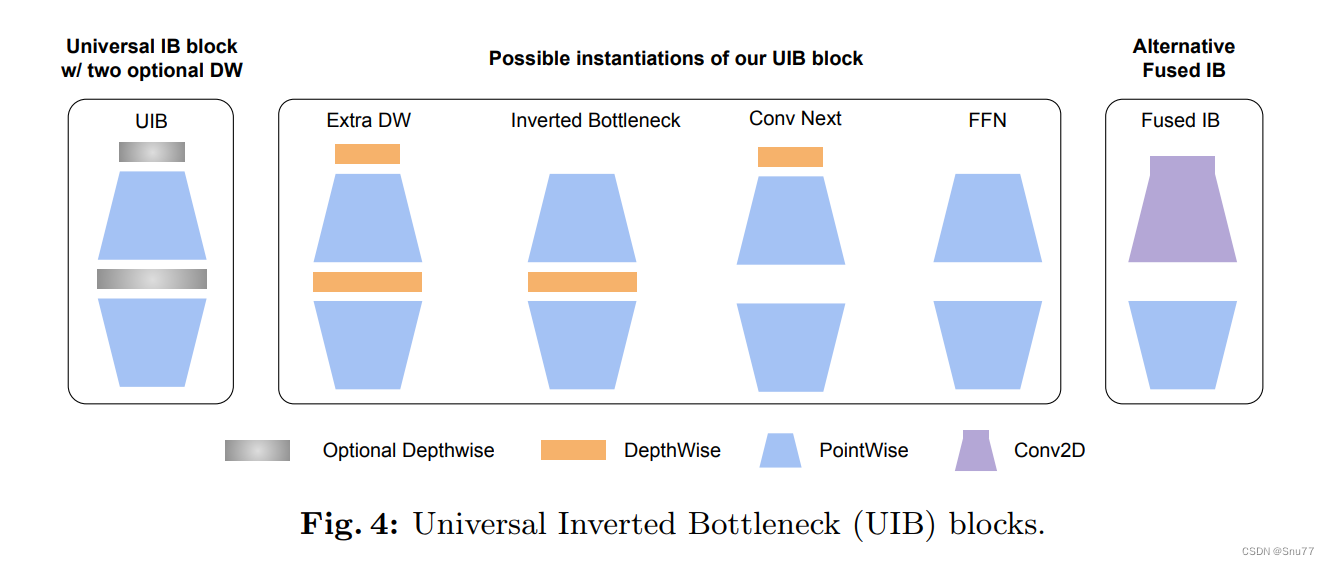
2. Mobile MQA注意力机制:
为了优化移动加速器的性能,MobileNetV4设计了一个特殊的注意力模块,名为Mobile MQA。这一模块针对移动设备的计算和存储限制进行了优化,提供了高达39%的推理速度提升。
3. 优化的神经架构搜索(NAS)配方:
通过改进的NAS配方,MobileNetV4能够更高效地搜索和优化网络架构,这有助于发现适合特定硬件的最优模型配置。
4. 模型蒸馏技术:
引入了一种新的蒸馏技术,用以提高模型的准确性。通过这种技术,MNv4-Hybrid-Large模型在ImageNet-1K上达到了87%的准确率,并且在Pixel 8 EdgeTPU上的运行时间仅为3.8毫秒。
个人总结:MobileNetV4是一个专为移动设备设计的高效深度学习模型。它通过整合多种先进技术,如通用反转瓶颈(UIB)、针对移动设备优化的注意力机制(Mobile MQA),以及先进的架构搜索方法(NAS),实现了在不同硬件上的高效运行。这些技术的融合不仅大幅提升了模型的运行速度,还显著提高了准确率。特别是,它的一个变体模型在标准图像识别测试中取得了87%的准确率,运行速度极快。
三、核心代码
核心代码的使用方式看章节四!
from typing import Optional
import torch
import torch.nn as nn
import torch.nn.functional as F
__all__ = ['MobileNetV4ConvLarge', 'MobileNetV4ConvSmall', 'MobileNetV4ConvMedium', 'MobileNetV4HybridMedium', 'MobileNetV4HybridLarge']
MNV4ConvSmall_BLOCK_SPECS = {
"conv0": {
"block_name": "convbn",
"num_blocks": 1,
"block_specs": [
[3, 32, 3, 2]
]
},
"layer1": {
"block_name": "convbn",
"num_blocks": 2,
"block_specs": [
[32, 32, 3, 2],
[32, 32, 1, 1]
]
},
"layer2": {
"block_name": "convbn",
"num_blocks": 2,
"block_specs": [
[32, 96, 3, 2],
[96, 64, 1, 1]
]
},
"layer3": {
"block_name": "uib",
"num_blocks": 6,
"block_specs": [
[64, 96, 5, 5, True, 2, 3],
[96, 96, 0, 3, True, 1, 2],
[96, 96, 0, 3, True, 1, 2],
[96, 96, 0, 3, True, 1, 2],
[96, 96, 0, 3, True, 1, 2],
[96, 96, 3, 0, True, 1, 4],
]
},
"layer4": {
"block_name": "uib",
"num_blocks": 6,
"block_specs": [
[96, 128, 3, 3, True, 2, 6],
[128, 128, 5, 5, True, 1, 4],
[128, 128, 0, 5, True, 1, 4],
[128, 128, 0, 5, True, 1, 3],
[128, 128, 0, 3, True, 1, 4],
[128, 128, 0, 3, True, 1, 4],
]
},
"layer5": {
"block_name": "convbn",
"num_blocks": 2,
"block_specs": [
[128, 960, 1, 1],
[960, 1280, 1, 1]
]
}
}
MNV4ConvMedium_BLOCK_SPECS = {
"conv0": {
"block_name": "convbn",
"num_blocks": 1,
"block_specs": [
[3, 32, 3, 2]
]
},
"layer1": {
"block_name": "fused_ib",
"num_blocks": 1,
"block_specs": [
[32, 48, 2, 4.0, True]
]
},
"layer2": {
"block_name": "uib",
"num_blocks": 2,
"block_specs": [
[48, 80, 3, 5, True, 2, 4],
[80, 80, 3, 3, True, 1, 2]
]
},
"layer3": {
"block_name": "uib",
"num_blocks": 8,
"block_specs": [
[80, 160, 3, 5, True, 2, 6],
[160, 160, 3, 3, True, 1, 4],
[160, 160, 3, 3, True, 1, 4],
[160, 160, 3, 5, True, 1, 4],
[160, 160, 3, 3, True, 1, 4],
[160, 160, 3, 0, True, 1, 4],
[160, 160, 0, 0, True, 1, 2],
[160, 160, 3, 0, True, 1, 4]
]
},
"layer4": {
"block_name": "uib",
"num_blocks": 11,
"block_specs": [
[160, 256, 5, 5, True, 2, 6],
[256, 256, 5, 5, True, 1, 4],
[256, 256, 3, 5, True, 1, 4],
[256, 256, 3, 5, True, 1, 4],
[256, 256, 0, 0, True, 1, 4],
[256, 256, 3, 0, True, 1, 4],
[256, 256, 3, 5, True, 1, 2],
[256, 256, 5, 5, True, 1, 4],
[256, 256, 0, 0, True, 1, 4],
[256, 256, 0, 0, True, 1, 4],
[256, 256, 5, 0, True, 1, 2]
]
},
"layer5": {
"block_name": "convbn",
"num_blocks": 2,
"block_specs": [
[256, 960, 1, 1],
[960, 1280, 1, 1]
]
}
}
MNV4ConvLarge_BLOCK_SPECS = {
"conv0": {
"block_name": "convbn",
"num_blocks": 1,
"block_specs": [
[3, 24, 3, 2]
]
},
"layer1": {
"block_name": "fused_ib",
"num_blocks": 1,
"block_specs": [
[24, 48, 2, 4.0, True]
]
},
"layer2": {
"block_name": "uib",
"num_blocks": 2,
"block_specs": [
[48, 96, 3, 5, True, 2, 4],
[96, 96, 3, 3, True, 1, 4]
]
},
"layer3": {
"block_name": "uib",
"num_blocks": 11,
"block_specs": [
[96, 192, 3, 5, True, 2, 4],
[192, 192, 3, 3, True, 1, 4],
[192, 192, 3, 3, True, 1, 4],
[192, 192, 3, 3, True, 1, 4],
[192, 192, 3, 5, True, 1, 4],
[192, 192, 5, 3, True, 1, 4],
[192, 192, 5, 3, True, 1, 4],
[192, 192, 5, 3, True, 1, 4],
[192, 192, 5, 3, True, 1, 4],
[192, 192, 5, 3, True, 1, 4],
[192, 192, 3, 0, True, 1, 4]
]
},
"layer4": {
"block_name": "uib",
"num_blocks": 13,
"block_specs": [
[192, 512, 5, 5, True, 2, 4],
[512, 512, 5, 5, True, 1, 4],
[512, 512, 5, 5, True, 1, 4],
[512, 512, 5, 5, True, 1, 4],
[512, 512, 5, 0, True, 1, 4],
[512, 512, 5, 3, True, 1, 4],
[512, 512, 5, 0, True, 1, 4],
[512, 512, 5, 0, True, 1, 4],
[512, 512, 5, 3, True, 1, 4],
[512, 512, 5, 5, True, 1, 4],
[512, 512, 5, 0, True, 1, 4],
[512, 512, 5, 0, True, 1, 4],
[512, 512, 5, 0, True, 1, 4]
]
},
"layer5": {
"block_name": "convbn",
"num_blocks": 2,
"block_specs": [
[512, 960, 1, 1],
[960, 1280, 1, 1]
]
}
}
def mhsa(num_heads, key_dim, value_dim, px):
if px == 24:
kv_strides = 2
elif px == 12:
kv_strides = 1
query_h_strides = 1
query_w_strides = 1
use_layer_scale = True
use_multi_query = True
use_residual = True
return [
num_heads, key_dim, value_dim, query_h_strides, query_w_strides, kv_strides,
use_layer_scale, use_multi_query, use_residual
]
MNV4HybridConvMedium_BLOCK_SPECS = {
"conv0": {
"block_name": "convbn",
"num_blocks": 1,
"block_specs": [
[3, 32, 3, 2]
]
},
"layer1": {
"block_name": "fused_ib",
"num_blocks": 1,
"block_specs": [
[32, 48, 2, 4.0, True]
]
},
"layer2": {
"block_name": "uib",
"num_blocks": 2,
"block_specs": [
[48, 80, 3, 5, True, 2, 4],
[80, 80, 3, 3, True, 1, 2]
]
},
"layer3": {
"block_name": "uib",
"num_blocks": 8,
"block_specs": [
[80, 160, 3, 5, True, 2, 6],
[160, 160, 0, 0, True, 1, 2],
[160, 160, 3, 3, True, 1, 4],
[160, 160, 3, 5, True, 1, 4, mhsa(4, 64, 64, 24)],
[160, 160, 3, 3, True, 1, 4, mhsa(4, 64, 64, 24)],
[160, 160, 3, 0, True, 1, 4, mhsa(4, 64, 64, 24)],
[160, 160, 3, 3, True, 1, 4, mhsa(4, 64, 64, 24)],
[160, 160, 3, 0, True, 1, 4]
]
},
"layer4": {
"block_name": "uib",
"num_blocks": 12,
"block_specs": [
[160, 256, 5, 5, True, 2, 6],
[256, 256, 5, 5, True, 1, 4],
[256, 256, 3, 5, True, 1, 4],
[256, 256, 3, 5, True, 1, 4],
[256, 256, 0, 0, True, 1, 2],
[256, 256, 3, 5, True, 1, 2],
[256, 256, 0, 0, True, 1, 2],
[256, 256, 0, 0, True, 1, 4, mhsa(4, 64, 64, 12)],
[256, 256, 3, 0, True, 1, 4, mhsa(4, 64, 64, 12)],
[256, 256, 5, 5, True, 1, 4, mhsa(4, 64, 64, 12)],
[256, 256, 5, 0, True, 1, 4, mhsa(4, 64, 64, 12)],
[256, 256, 5, 0, True, 1, 4]
]
},
"layer5": {
"block_name": "convbn",
"num_blocks": 2,
"block_specs": [
[256, 960, 1, 1],
[960, 1280, 1, 1]
]
}
}
MNV4HybridConvLarge_BLOCK_SPECS = {
"conv0": {
"block_name": "convbn",
"num_blocks": 1,
"block_specs": [
[3, 24, 3, 2]
]
},
"layer1": {
"block_name": "fused_ib",
"num_blocks": 1,
"block_specs": [
[24, 48, 2, 4.0, True]
]
},
"layer2": {
"block_name": "uib",
"num_blocks": 2,
"block_specs": [
[48, 96, 3, 5, True, 2, 4],
[96, 96, 3, 3, True, 1, 4]
]
},
"layer3": {
"block_name": "uib",
"num_blocks": 11,
"block_specs": [
[96, 192, 3, 5, True, 2, 4],
[192, 192, 3, 3, True, 1, 4],
[192, 192, 3, 3, True, 1, 4],
[192, 192, 3, 3, True, 1, 4],
[192, 192, 3, 5, True, 1, 4],
[192, 192, 5, 3, True, 1, 4],
[192, 192, 5, 3, True, 1, 4, mhsa(8, 48, 48, 24)],
[192, 192, 5, 3, True, 1, 4, mhsa(8, 48, 48, 24)],
[192, 192, 5, 3, True, 1, 4, mhsa(8, 48, 48, 24)],
[192, 192, 5, 3, True, 1, 4, mhsa(8, 48, 48, 24)],
[192, 192, 3, 0, True, 1, 4]
]
},
"layer4": {
"block_name": "uib",
"num_blocks": 14,
"block_specs": [
[192, 512, 5, 5, True, 2, 4],
[512, 512, 5, 5, True, 1, 4],
[512, 512, 5, 5, True, 1, 4],
[512, 512, 5, 5, True, 1, 4],
[512, 512, 5, 0, True, 1, 4],
[512, 512, 5, 3, True, 1, 4],
[512, 512, 5, 0, True, 1, 4],
[512, 512, 5, 0, True, 1, 4],
[512, 512, 5, 3, True, 1, 4],
[512, 512, 5, 5, True, 1, 4, mhsa(8, 64, 64, 12)],
[512, 512, 5, 0, True, 1, 4, mhsa(8, 64, 64, 12)],
[512, 512, 5, 0, True, 1, 4, mhsa(8, 64, 64, 12)],
[512, 512, 5, 0, True, 1, 4, mhsa(8, 64, 64, 12)],
[512, 512, 5, 0, True, 1, 4]
]
},
"layer5": {
"block_name": "convbn",
"num_blocks": 2,
"block_specs": [
[512, 960, 1, 1],
[960, 1280, 1, 1]
]
}
}
MODEL_SPECS = {
"MobileNetV4ConvSmall": MNV4ConvSmall_BLOCK_SPECS,
"MobileNetV4ConvMedium": MNV4ConvMedium_BLOCK_SPECS,
"MobileNetV4ConvLarge": MNV4ConvLarge_BLOCK_SPECS,
"MobileNetV4HybridMedium": MNV4HybridConvMedium_BLOCK_SPECS,
"MobileNetV4HybridLarge": MNV4HybridConvLarge_BLOCK_SPECS
}
def make_divisible(
value: float,
divisor: int,
min_value: Optional[float] = None,
round_down_protect: bool = True,
) -> int:
"""
This function is copied from here
"https://github.com/tensorflow/models/blob/master/official/vision/modeling/layers/nn_layers.py"
This is to ensure that all layers have channels that are divisible by 8.
Args:
value: A `float` of original value.
divisor: An `int` of the divisor that need to be checked upon.
min_value: A `float` of minimum value threshold.
round_down_protect: A `bool` indicating whether round down more than 10%
will be allowed.
Returns:
The adjusted value in `int` that is divisible against divisor.
"""
if min_value is None:
min_value = divisor
new_value = max(min_value, int(value + divisor / 2) // divisor * divisor)
# Make sure that round down does not go down by more than 10%.
if round_down_protect and new_value < 0.9 * value:
new_value += divisor
return int(new_value)
def conv_2d(inp, oup, kernel_size=3, stride=1, groups=1, bias=False, norm=True, act=True):
conv = nn.Sequential()
padding = (kernel_size - 1) // 2
conv.add_module('conv', nn.Conv2d(inp, oup, kernel_size, stride, padding, bias=bias, groups=groups))
if norm:
conv.add_module('BatchNorm2d', nn.BatchNorm2d(oup))
if act:
conv.add_module('Activation', nn.ReLU6())
return conv
class InvertedResidual(nn.Module):
def __init__(self, inp, oup, stride, expand_ratio, act=False, squeeze_excitation=False):
super(InvertedResidual, self).__init__()
self.stride = stride
assert stride in [1, 2]
hidden_dim = int(round(inp * expand_ratio))
self.block = nn.Sequential()
if expand_ratio != 1:
self.block.add_module('exp_1x1', conv_2d(inp, hidden_dim, kernel_size=3, stride=stride))
if squeeze_excitation:
self.block.add_module('conv_3x3',
conv_2d(hidden_dim, hidden_dim, kernel_size=3, stride=stride, groups=hidden_dim))
self.block.add_module('red_1x1', conv_2d(hidden_dim, oup, kernel_size=1, stride=1, act=act))
self.use_res_connect = self.stride == 1 and inp == oup
def forward(self, x):
if self.use_res_connect:
return x + self.block(x)
else:
return self.block(x)
class UniversalInvertedBottleneckBlock(nn.Module):
def __init__(self,
inp,
oup,
start_dw_kernel_size,
middle_dw_kernel_size,
middle_dw_downsample,
stride,
expand_ratio
):
"""An inverted bottleneck block with optional depthwises.
Referenced from here https://github.com/tensorflow/models/blob/master/official/vision/modeling/layers/nn_blocks.py
"""
super().__init__()
# Starting depthwise conv.
self.start_dw_kernel_size = start_dw_kernel_size
if self.start_dw_kernel_size:
stride_ = stride if not middle_dw_downsample else 1
self._start_dw_ = conv_2d(inp, inp, kernel_size=start_dw_kernel_size, stride=stride_, groups=inp, act=False)
# Expansion with 1x1 convs.
expand_filters = make_divisible(inp * expand_ratio, 8)
self._expand_conv = conv_2d(inp, expand_filters, kernel_size=1)
# Middle depthwise conv.
self.middle_dw_kernel_size = middle_dw_kernel_size
if self.middle_dw_kernel_size:
stride_ = stride if middle_dw_downsample else 1
self._middle_dw = conv_2d(expand_filters, expand_filters, kernel_size=middle_dw_kernel_size, stride=stride_,
groups=expand_filters)
# Projection with 1x1 convs.
self._proj_conv = conv_2d(expand_filters, oup, kernel_size=1, stride=1, act=False)
# Ending depthwise conv.
# this not used
# _end_dw_kernel_size = 0
# self._end_dw = conv_2d(oup, oup, kernel_size=_end_dw_kernel_size, stride=stride, groups=inp, act=False)
def forward(self, x):
if self.start_dw_kernel_size:
x = self._start_dw_(x)
# print("_start_dw_", x.shape)
x = self._expand_conv(x)
# print("_expand_conv", x.shape)
if self.middle_dw_kernel_size:
x = self._middle_dw(x)
# print("_middle_dw", x.shape)
x = self._proj_conv(x)
# print("_proj_conv", x.shape)
return x
class MultiQueryAttentionLayerWithDownSampling(nn.Module):
def __init__(self, inp, num_heads, key_dim, value_dim, query_h_strides, query_w_strides, kv_strides,
dw_kernel_size=3, dropout=0.0):
"""Multi Query Attention with spatial downsampling.
Referenced from here https://github.com/tensorflow/models/blob/master/official/vision/modeling/layers/nn_blocks.py
3 parameters are introduced for the spatial downsampling:
1. kv_strides: downsampling factor on Key and Values only.
2. query_h_strides: vertical strides on Query only.
3. query_w_strides: horizontal strides on Query only.
This is an optimized version.
1. Projections in Attention is explict written out as 1x1 Conv2D.
2. Additional reshapes are introduced to bring a up to 3x speed up.
"""
super().__init__()
self.num_heads = num_heads
self.key_dim = key_dim
self.value_dim = value_dim
self.query_h_strides = query_h_strides
self.query_w_strides = query_w_strides
self.kv_strides = kv_strides
self.dw_kernel_size = dw_kernel_size
self.dropout = dropout
self.head_dim = key_dim // num_heads
if self.query_h_strides > 1 or self.query_w_strides > 1:
self._query_downsampling_norm = nn.BatchNorm2d(inp)
self._query_proj = conv_2d(inp, num_heads * key_dim, 1, 1, norm=False, act=False)
if self.kv_strides > 1:
self._key_dw_conv = conv_2d(inp, inp, dw_kernel_size, kv_strides, groups=inp, norm=True, act=False)
self._value_dw_conv = conv_2d(inp, inp, dw_kernel_size, kv_strides, groups=inp, norm=True, act=False)
self._key_proj = conv_2d(inp, key_dim, 1, 1, norm=False, act=False)
self._value_proj = conv_2d(inp, key_dim, 1, 1, norm=False, act=False)
self._output_proj = conv_2d(num_heads * key_dim, inp, 1, 1, norm=False, act=False)
self.dropout = nn.Dropout(p=dropout)
def forward(self, x):
batch_size, seq_length, _, _ = x.size()
if self.query_h_strides > 1 or self.query_w_strides > 1:
q = F.avg_pool2d(self.query_h_stride, self.query_w_stride)
q = self._query_downsampling_norm(q)
q = self._query_proj(q)
else:
q = self._query_proj(x)
px = q.size(2)
q = q.view(batch_size, self.num_heads, -1, self.key_dim) # [batch_size, num_heads, seq_length, key_dim]
if self.kv_strides > 1:
k = self._key_dw_conv(x)
k = self._key_proj(k)
v = self._value_dw_conv(x)
v = self._value_proj(v)
else:
k = self._key_proj(x)
v = self._value_proj(x)
k = k.view(batch_size, self.key_dim, -1) # [batch_size, key_dim, seq_length]
v = v.view(batch_size, -1, self.key_dim) # [batch_size, seq_length, key_dim]
# calculate attn score
attn_score = torch.matmul(q, k) / (self.head_dim ** 0.5)
attn_score = self.dropout(attn_score)
attn_score = F.softmax(attn_score, dim=-1)
context = torch.matmul(attn_score, v)
context = context.view(batch_size, self.num_heads * self.key_dim, px, px)
output = self._output_proj(context)
return output
class MNV4LayerScale(nn.Module):
def __init__(self, init_value):
"""LayerScale as introduced in CaiT: https://arxiv.org/abs/2103.17239
Referenced from here https://github.com/tensorflow/models/blob/master/official/vision/modeling/layers/nn_blocks.py
As used in MobileNetV4.
Attributes:
init_value (float): value to initialize the diagonal matrix of LayerScale.
"""
super().__init__()
self.init_value = init_value
def forward(self, x):
gamma = self.init_value * torch.ones(x.size(-1), dtype=x.dtype, device=x.device)
return x * gamma
class MultiHeadSelfAttentionBlock(nn.Module):
def __init__(
self,
inp,
num_heads,
key_dim,
value_dim,
query_h_strides,
query_w_strides,
kv_strides,
use_layer_scale,
use_multi_query,
use_residual=True
):
super().__init__()
self.query_h_strides = query_h_strides
self.query_w_strides = query_w_strides
self.kv_strides = kv_strides
self.use_layer_scale = use_layer_scale
self.use_multi_query = use_multi_query
self.use_residual = use_residual
self._input_norm = nn.BatchNorm2d(inp)
if self.use_multi_query:
self.multi_query_attention = MultiQueryAttentionLayerWithDownSampling(
inp, num_heads, key_dim, value_dim, query_h_strides, query_w_strides, kv_strides
)
else:
self.multi_head_attention = nn.MultiheadAttention(inp, num_heads, kdim=key_dim)
if self.use_layer_scale:
self.layer_scale_init_value = 1e-5
self.layer_scale = MNV4LayerScale(self.layer_scale_init_value)
def forward(self, x):
# Not using CPE, skipped
# input norm
shortcut = x
x = self._input_norm(x)
# multi query
if self.use_multi_query:
x = self.multi_query_attention(x)
else:
x = self.multi_head_attention(x, x)
# layer scale
if self.use_layer_scale:
x = self.layer_scale(x)
# use residual
if self.use_residual:
x = x + shortcut
return x
def build_blocks(layer_spec):
if not layer_spec.get('block_name'):
return nn.Sequential()
block_names = layer_spec['block_name']
layers = nn.Sequential()
if block_names == "convbn":
schema_ = ['inp', 'oup', 'kernel_size', 'stride']
for i in range(layer_spec['num_blocks']):
args = dict(zip(schema_, layer_spec['block_specs'][i]))
layers.add_module(f"convbn_{i}", conv_2d(**args))
elif block_names == "uib":
schema_ = ['inp', 'oup', 'start_dw_kernel_size', 'middle_dw_kernel_size', 'middle_dw_downsample', 'stride',
'expand_ratio', 'msha']
for i in range(layer_spec['num_blocks']):
args = dict(zip(schema_, layer_spec['block_specs'][i]))
msha = args.pop("msha") if "msha" in args else 0
layers.add_module(f"uib_{i}", UniversalInvertedBottleneckBlock(**args))
if msha:
msha_schema_ = [
"inp", "num_heads", "key_dim", "value_dim", "query_h_strides", "query_w_strides", "kv_strides",
"use_layer_scale", "use_multi_query", "use_residual"
]
args = dict(zip(msha_schema_, [args['oup']] + (msha)))
layers.add_module(f"msha_{i}", MultiHeadSelfAttentionBlock(**args))
elif block_names == "fused_ib":
schema_ = ['inp', 'oup', 'stride', 'expand_ratio', 'act']
for i in range(layer_spec['num_blocks']):
args = dict(zip(schema_, layer_spec['block_specs'][i]))
layers.add_module(f"fused_ib_{i}", InvertedResidual(**args))
else:
raise NotImplementedError
return layers
class MobileNetV4(nn.Module):
def __init__(self, model):
# MobileNetV4ConvSmall MobileNetV4ConvMedium MobileNetV4ConvLarge
# MobileNetV4HybridMedium MobileNetV4HybridLarge
"""Params to initiate MobilenNetV4
Args:
model : support 5 types of models as indicated in
"https://github.com/tensorflow/models/blob/master/official/vision/modeling/backbones/mobilenet.py"
"""
super().__init__()
assert model in MODEL_SPECS.keys()
self.model = model
self.spec = MODEL_SPECS[self.model]
# conv0
self.conv0 = build_blocks(self.spec['conv0'])
# layer1
self.layer1 = build_blocks(self.spec['layer1'])
# layer2
self.layer2 = build_blocks(self.spec['layer2'])
# layer3
self.layer3 = build_blocks(self.spec['layer3'])
# layer4
self.layer4 = build_blocks(self.spec['layer4'])
# layer5
self.layer5 = build_blocks(self.spec['layer5'])
self.width_list = [i.size(1) for i in self.forward(torch.randn(1, 3, 640, 640))]
def forward(self, x):
x0 = self.conv0(x)
x1 = self.layer1(x0)
x2 = self.layer2(x1)
x3 = self.layer3(x2)
x4 = self.layer4(x3)
# x5 = self.layer5(x4)
# x5 = nn.functional.adaptive_avg_pool2d(x5, 1)
return [x1, x2, x3, x4]
def MobileNetV4ConvSmall():
model = MobileNetV4('MobileNetV4ConvSmall')
return model
def MobileNetV4ConvMedium():
model = MobileNetV4('MobileNetV4ConvMedium')
return model
def MobileNetV4ConvLarge():
model = MobileNetV4('MobileNetV4ConvLarge')
return model
def MobileNetV4HybridMedium():
model = MobileNetV4('MobileNetV4HybridMedium')
return model
def MobileNetV4HybridLarge():
model = MobileNetV4('MobileNetV4HybridLarge')
return model
if __name__ == "__main__":
# Generating Sample image
image_size = (1, 3, 640, 640)
image = torch.rand(*image_size)
# Model
model = MobileNetV4HybridLarge()
out = model(image)
for i in range(len(out)):
print(out[i].shape)
四、手把手教你添加MobileNetv4
4.1 修改一
第一步还是建立文件,我们找到如下ultralytics/nn/modules文件夹下建立一个目录名字呢就是'Addmodules'文件夹(用群内的文件的话已经有了无需新建)!然后在其内部建立一个新的py文件将核心代码复制粘贴进去即可
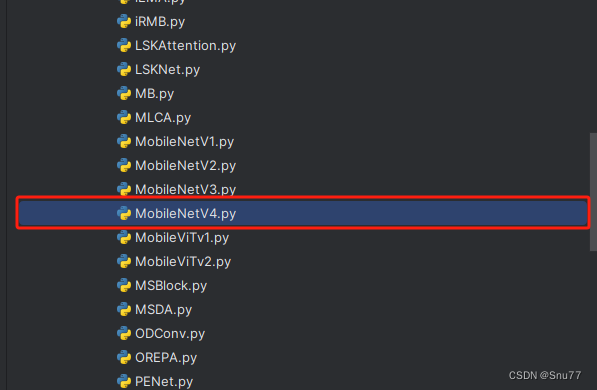
4.2 修改二
第二步我们在该目录下创建一个新的py文件名字为'__init__.py'(用群内的文件的话已经有了无需新建),然后在其内部导入我们的检测头如下图所示。

4.3 修改三
第三步我门中到如下文件'ultralytics/nn/tasks.py'进行导入和注册我们的模块(用群内的文件的话已经有了无需重新导入直接开始第四步即可)!
从今天开始以后的教程就都统一成这个样子了,因为我默认大家用了我群内的文件来进行修改!!
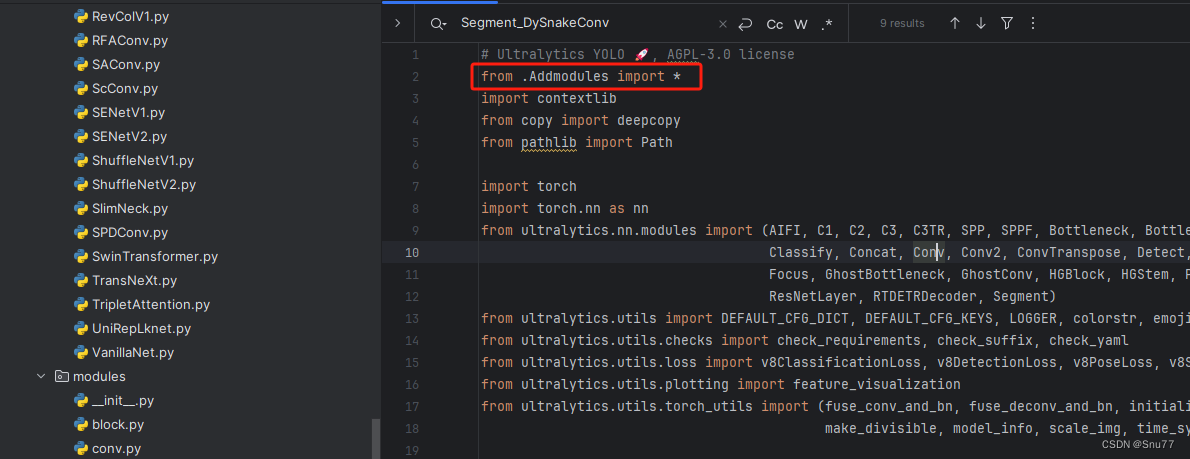
4.4 修改四
添加如下两行代码!!!

4.5 修改五
找到七百多行大概把具体看图片,按照图片来修改就行,添加红框内的部分,注意没有()只是函数名。
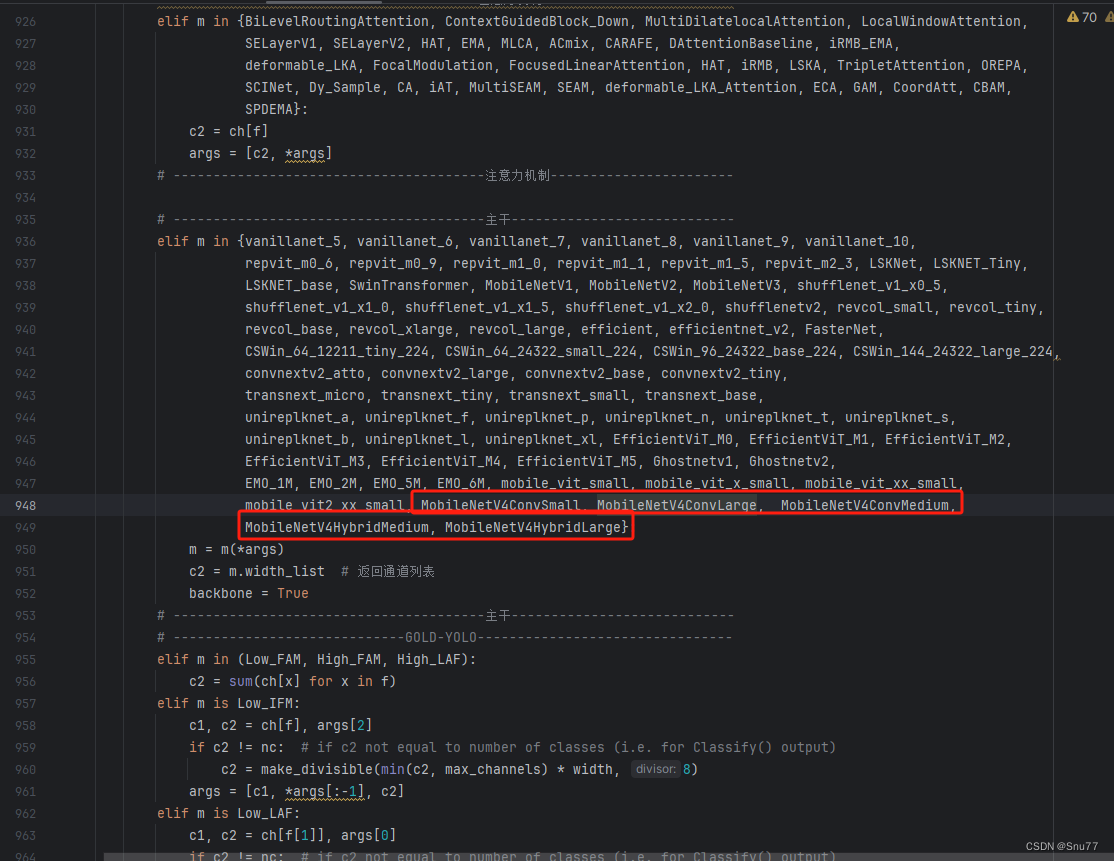
elif m in {自行添加对应的模型即可,下面都是一样的}:
m = m(*args)
c2 = m.width_list # 返回通道列表
backbone = True4.6 修改六
下面的两个红框内都是需要改动的。

if isinstance(c2, list):
m_ = m
m_.backbone = True
else:
m_ = nn.Sequential(*(m(*args) for _ in range(n))) if n > 1 else m(*args) # module
t = str(m)[8:-2].replace('__main__.', '') # module type
m.np = sum(x.numel() for x in m_.parameters()) # number params
m_.i, m_.f, m_.type = i + 4 if backbone else i, f, t # attach index, 'from' index, type4.7 修改七
如下的也需要修改,全部按照我的来。

代码如下把原先的代码替换了即可。
if verbose:
LOGGER.info(f'{i:>3}{str(f):>20}{n_:>3}{m.np:10.0f} {t:<45}{str(args):<30}') # print
save.extend(x % (i + 4 if backbone else i) for x in ([f] if isinstance(f, int) else f) if x != -1) # append to savelist
layers.append(m_)
if i == 0:
ch = []
if isinstance(c2, list):
ch.extend(c2)
if len(c2) != 5:
ch.insert(0, 0)
else:
ch.append(c2)4.8 修改八
修改八和前面的都不太一样,需要修改前向传播中的一个部分, 已经离开了parse_model方法了。
可以在图片中开代码行数,没有离开task.py文件都是同一个文件。 同时这个部分有好几个前向传播都很相似,大家不要看错了,是70多行左右的!!!,同时我后面提供了代码,大家直接复制粘贴即可,有时间我针对这里会出一个视频。
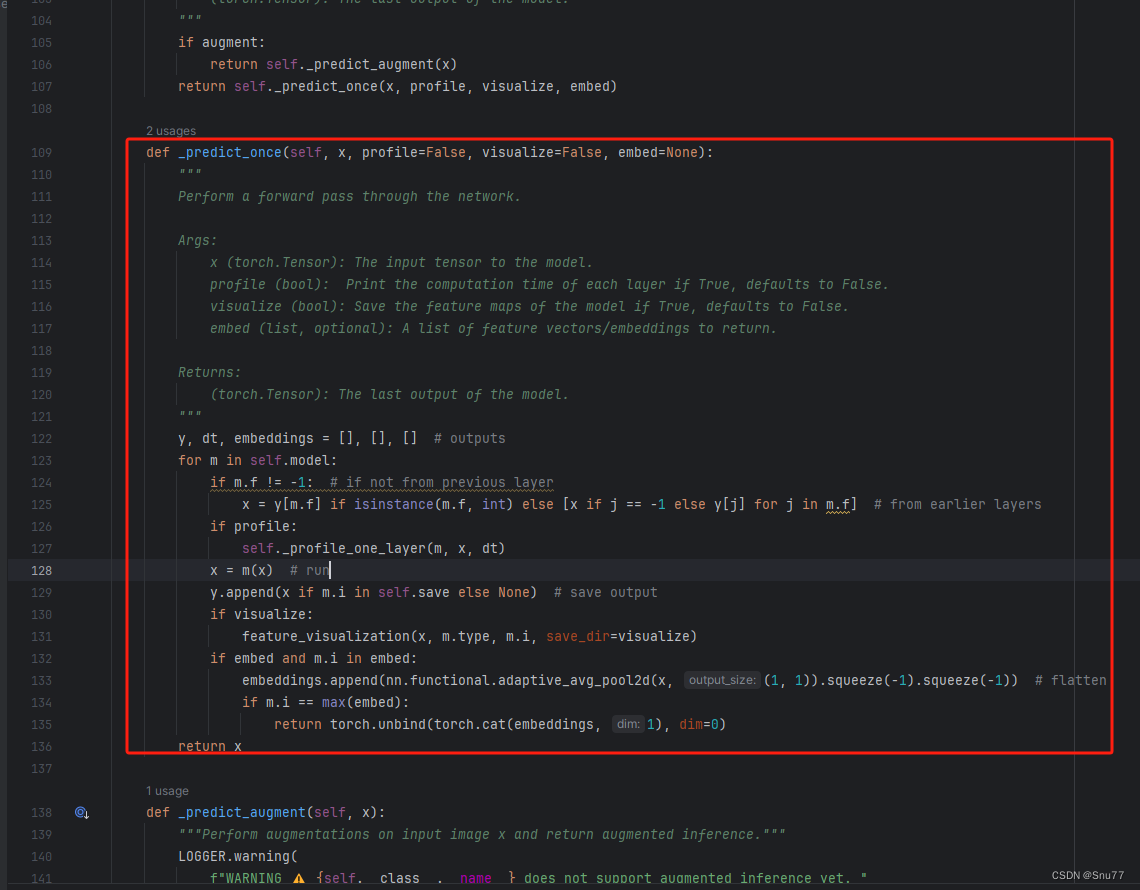
代码如下->
def _predict_once(self, x, profile=False, visualize=False, embed=None):
"""
Perform a forward pass through the network.
Args:
x (torch.Tensor): The input tensor to the model.
profile (bool): Print the computation time of each layer if True, defaults to False.
visualize (bool): Save the feature maps of the model if True, defaults to False.
embed (list, optional): A list of feature vectors/embeddings to return.
Returns:
(torch.Tensor): The last output of the model.
"""
y, dt, embeddings = [], [], [] # outputs
for m in self.model:
if m.f != -1: # if not from previous layer
x = y[m.f] if isinstance(m.f, int) else [x if j == -1 else y[j] for j in m.f] # from earlier layers
if profile:
self._profile_one_layer(m, x, dt)
if hasattr(m, 'backbone'):
x = m(x)
if len(x) != 5: # 0 - 5
x.insert(0, None)
for index, i in enumerate(x):
if index in self.save:
y.append(i)
else:
y.append(None)
x = x[-1] # 最后一个输出传给下一层
else:
x = m(x) # run
y.append(x if m.i in self.save else None) # save output
if visualize:
feature_visualization(x, m.type, m.i, save_dir=visualize)
if embed and m.i in embed:
embeddings.append(nn.functional.adaptive_avg_pool2d(x, (1, 1)).squeeze(-1).squeeze(-1)) # flatten
if m.i == max(embed):
return torch.unbind(torch.cat(embeddings, 1), dim=0)
return x到这里就完成了修改部分,但是这里面细节很多,大家千万要注意不要替换多余的代码,导致报错,也不要拉下任何一部,都会导致运行失败,而且报错很难排查!!!很难排查!!!
注意!!! 额外的修改!
关注我的其实都知道,我大部分的修改都是一样的,这个网络需要额外的修改一步,就是s一个参数,将下面的s改为640!!!即可完美运行!!

打印计算量问题解决方案
我们找到如下文件'ultralytics/utils/torch_utils.py'按照如下的图片进行修改,否则容易打印不出来计算量。

注意事项!!!
如果大家在验证的时候报错形状不匹配的错误可以固定验证集的图片尺寸,方法如下 ->
找到下面这个文件ultralytics/models/yolo/detect/train.py然后其中有一个类是DetectionTrainer class中的build_dataset函数中的一个参数rect=mode == 'val'改为rect=False

五、MobileNetv4 的yaml文件
5.1 MobileNetv4 的yaml文件
复制如下yaml文件进行运行!!!
# Ultralytics YOLO 🚀, AGPL-3.0 license
# YOLOv8 object detection model with P3-P5 outputs. For Usage examples see https://docs.ultralytics.com/tasks/detect
# Parameters
nc: 80 # number of classes
scales: # model compound scaling constants, i.e. 'model=yolov8n.yaml' will call yolov8.yaml with scale 'n'
# [depth, width, max_channels]
n: [0.33, 0.25, 1024] # YOLOv8n summary: 225 layers, 3157200 parameters, 3157184 gradients, 8.9 GFLOPs
s: [0.33, 0.50, 1024] # YOLOv8s summary: 225 layers, 11166560 parameters, 11166544 gradients, 28.8 GFLOPs
m: [0.67, 0.75, 768] # YOLOv8m summary: 295 layers, 25902640 parameters, 25902624 gradients, 79.3 GFLOPs
l: [1.00, 1.00, 512] # YOLOv8l summary: 365 layers, 43691520 parameters, 43691504 gradients, 165.7 GFLOPs
x: [1.00, 1.25, 512] # YOLOv8x summary: 365 layers, 68229648 parameters, 68229632 gradients, 258.5 GFLOPs
# YOLOv8.0n backbone
backbone:
# [from, repeats, module, args]
# MobileNetV4ConvSmall, MobileNetV4ConvLarge, MobileNetV4ConvMedium,
# MobileNetV4HybridMedium, MobileNetV4HybridLarge 支持这五种版本
- [-1, 1, MobileNetV4ConvSmall, []] # 4 将左面的MobileNetV4ConvSmall改为上面任意一个即替换对应的MobileNetV4版本
- [-1, 1, SPPF, [1024, 5]] # 5
# YOLOv8.0n head
head:
- [-1, 1, nn.Upsample, [None, 2, 'nearest']] # 6
- [[-1, 3], 1, Concat, [1]] # 7 cat backbone P4
- [-1, 3, C2f, [512]] # 8
- [-1, 1, nn.Upsample, [None, 2, 'nearest']] # 9
- [[-1, 2], 1, Concat, [1]] # 10 cat backbone P3
- [-1, 3, C2f, [256]] # 11 (P3/8-small)
- [-1, 1, Conv, [256, 3, 2]] # 12
- [[-1, 8], 1, Concat, [1]] # 13 cat head P4
- [-1, 3, C2f, [512]] # 14 (P4/16-medium)
- [-1, 1, Conv, [512, 3, 2]] # 15
- [[-1, 5], 1, Concat, [1]] # 16 cat head P5
- [-1, 3, C2f, [1024]] # 17 (P5/32-large)
- [[11, 14, 17], 1, Detect, [nc]] # Detect(P3, P4, P5)
5.2 训练文件的代码
可以复制我的运行文件进行运行。
import warnings
warnings.filterwarnings('ignore')
from ultralytics import YOLO
if __name__ == '__main__':
model = YOLO("替换你的yaml文件地址")
model.load('yolov8n.pt')
model.train(data=r'你的数据集的地址',
cache=False,
imgsz=640,
epochs=150,
batch=4,
close_mosaic=0,
workers=0,
device=0,
optimizer='SGD'
amp=False,
)
六、成功运行记录
下面是成功运行的截图.

七、本文总结
到此本文的正式分享内容就结束了,在这里给大家推荐我的YOLOv8改进有效涨点专栏,本专栏目前为新开的平均质量分98分,后期我会根据各种最新的前沿顶会进行论文复现,也会对一些老的改进机制进行补充,如果大家觉得本文帮助到你了,订阅本专栏,关注后续更多的更新~
专栏回顾:YOLOv8改进系列专栏——本专栏持续复习各种顶会内容——科研必备




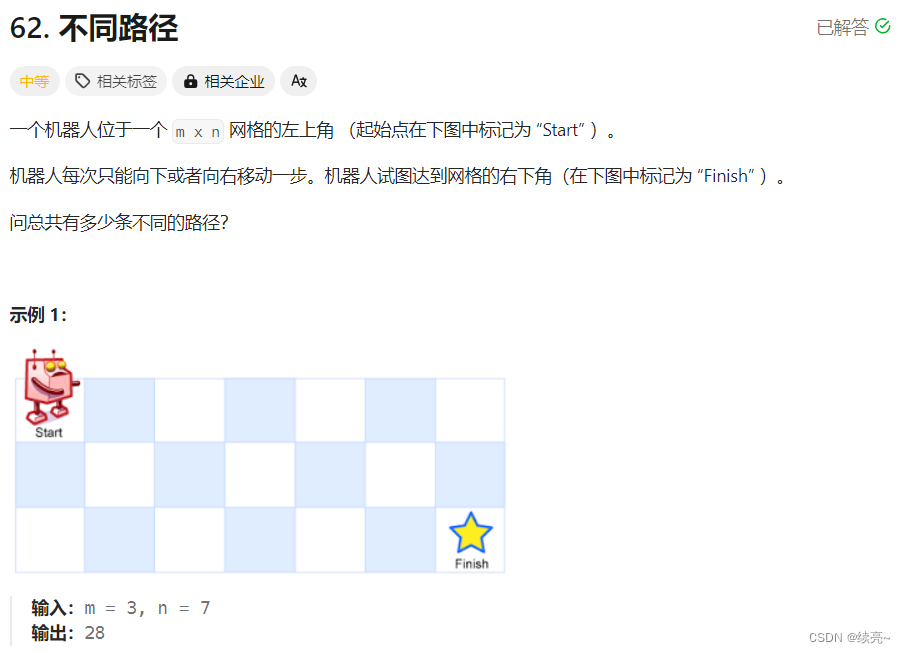

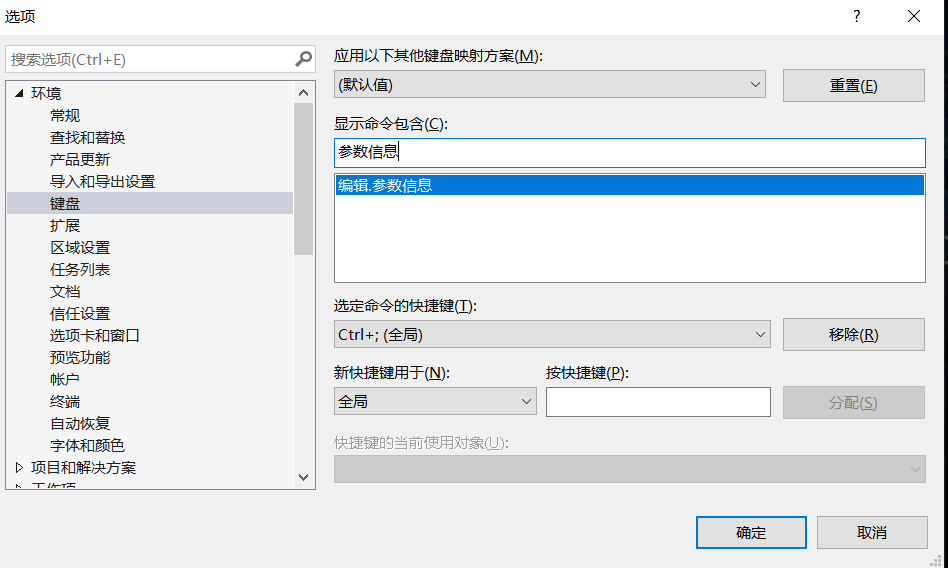
![[Linux][网络][TCP][四][流量控制][拥塞控制]详细讲解](https://img-blog.csdnimg.cn/direct/dce077804ba54774a5dfd6fc7e604780.png)




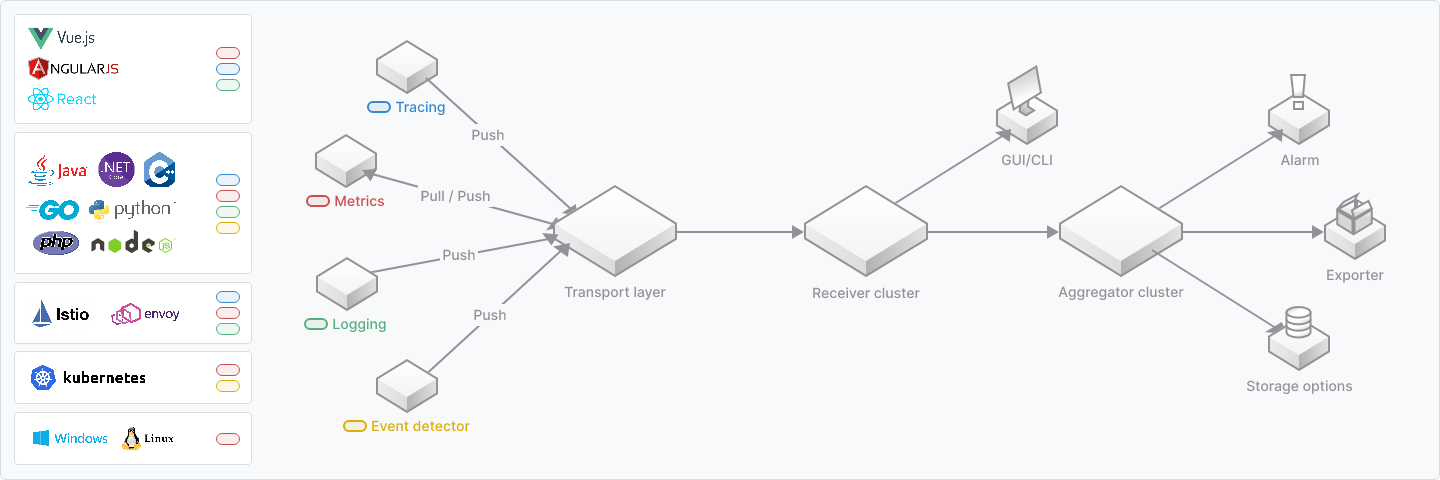


![[法规规划|数据概念]金融行业数据资产和安全管理系列文件解析(2)](https://img-blog.csdnimg.cn/img_convert/5a6602f5c7f382c2bb6b1364d22a3565.jpeg)
